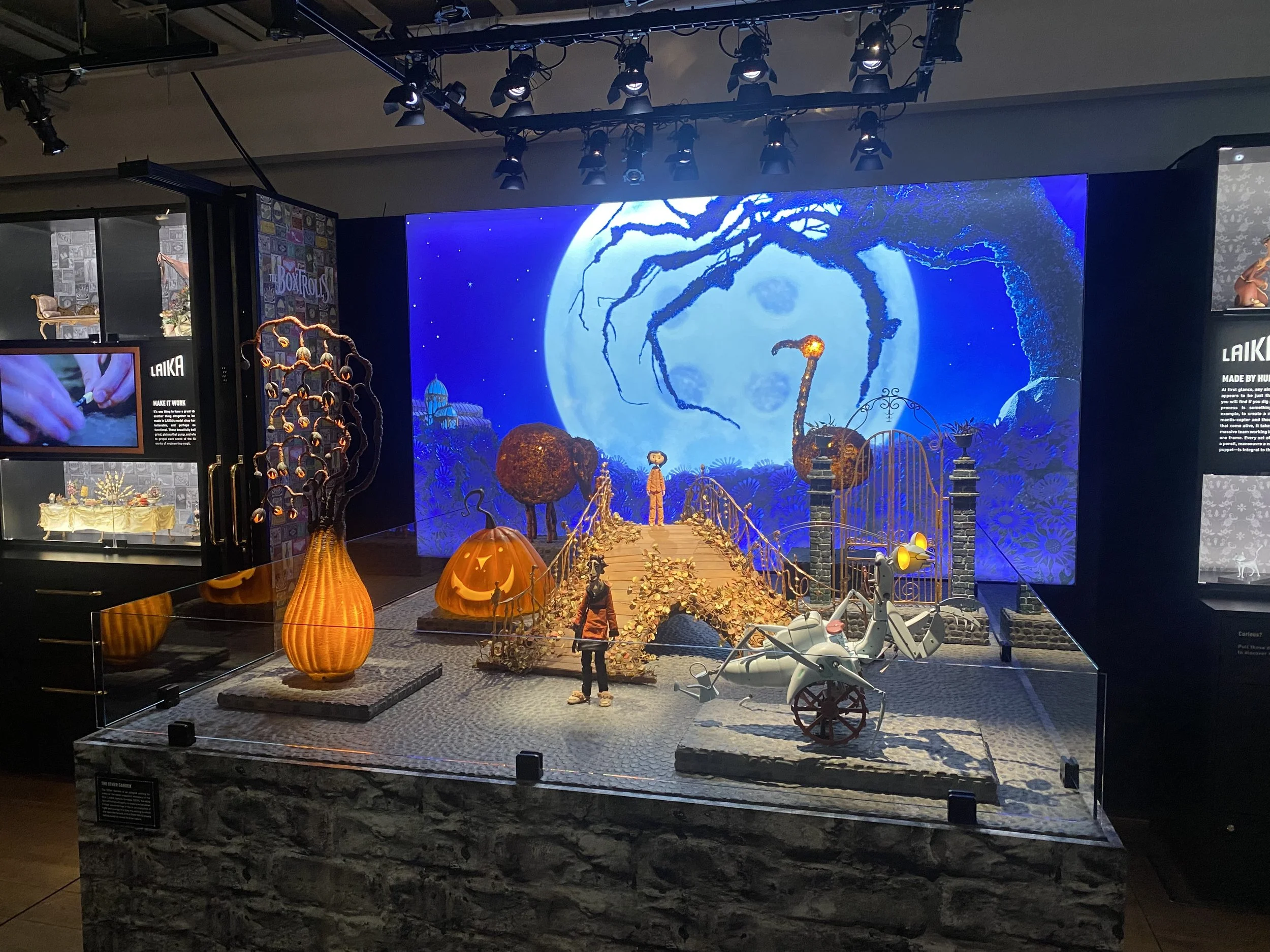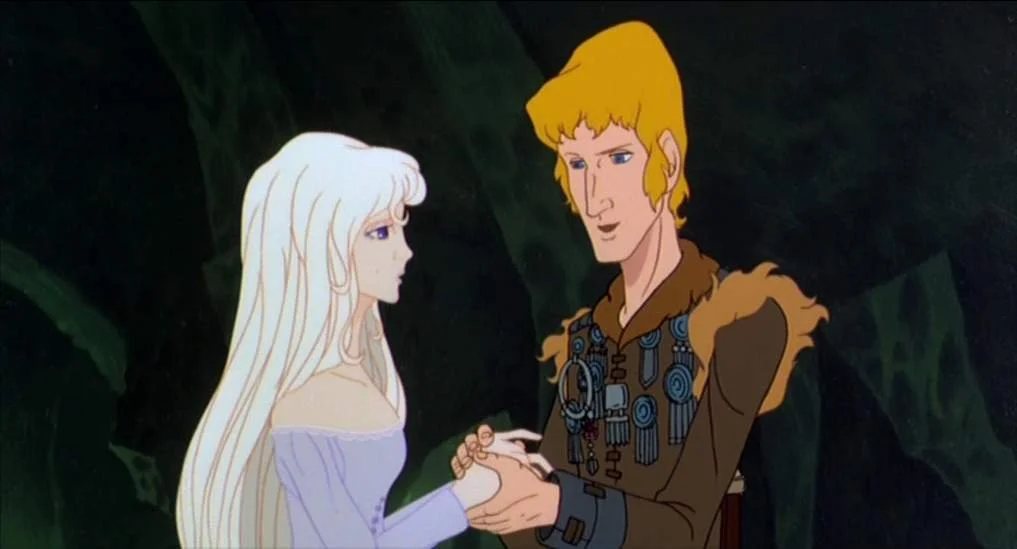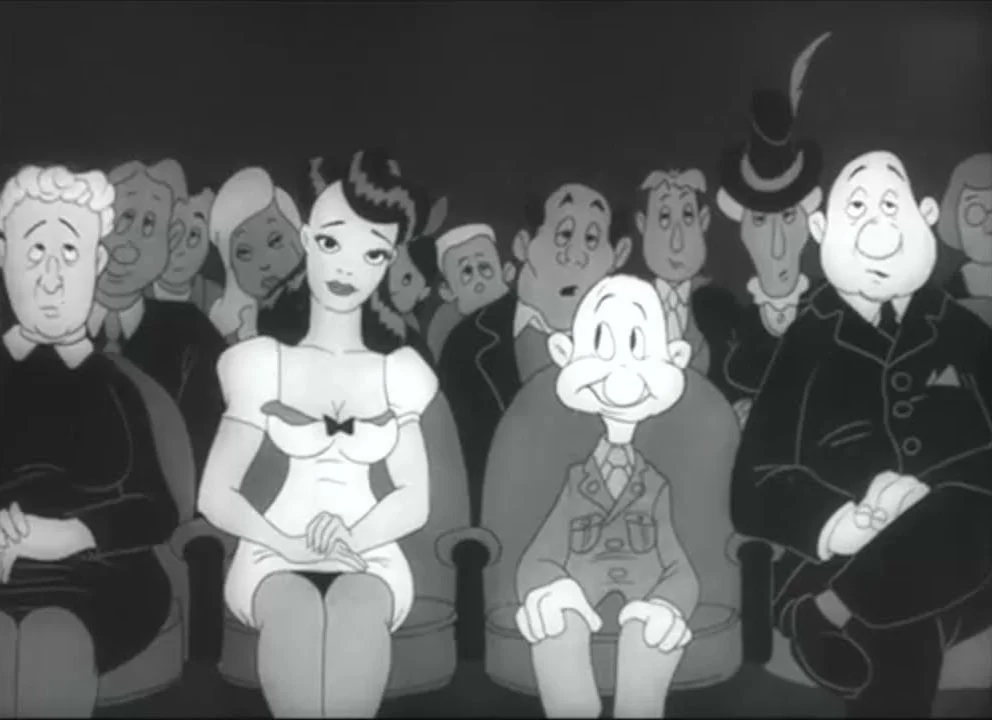The story of my animated film Plaything (still in production) and its themes of minstrelsy and racism is a long arduous journey that continues to surprise me even as I author this article. Once the film is completed, it will dive firmly and deeply into the darkest depths of American history and explore the disturbing roots of Blackface minstrelsy, slavery, and Jim Crow, which have nourished and supported multiple media form for nearly two centuries, from the macabre roots of the Southern Gothic sub-genre to cartoons and animated filmmaking.
Read MoreBased and inspired by Arabian Nights and other 13th-century folklore, The Thief and the Cobbler (1995) directed by legendary animator Richard Williams follows the parallel stories of a shy cobbler named Tack and a nameless kleptomaniac thief. Tack falls in love with the beautiful Princess Yum Yum of the Golden City after she saves him from the wrath of the grand vizier Zig Zag. Together, they must save their kingdom from death and destruction by retrieve the 3 golden balls that protect the city after the thief's failed attempt at stealing them, causing them to fall into the hands of Zig Zag who plans to marry princess Yum-Yum and rule the city.
Read MorePopular media has often portrayed technology as a looming threat to society and human livelihood. However, animation as a medium has provided a unique lens through which to explore the nuances of humanity's interaction with technological forces. Brad Bird's feature The Iron Giant (1999) stands as a poignant example of this exploration. By analyzing the use of hybrid animation techniques and storytelling in the film, I aim to unravel a metaphorical narrative that delves into humanity's relationship with technology, as well as its modern-day resonance with perceptions of artificial intelligence (AI) and assumptions on the threat of machine learning to humanity.
Read MoreBased on a book of the same name by Cressida Cowell, How to Train Your Dragon (Dean DeBlois, 2010) was influential on family audiences, and especially children, when it was released in March 2010, with a unique story about a misfit teenage Viking named Hiccup, discovering his sense of self as he ascends to adulthood. We follow Hiccup on his journey of self-discovery and self-acceptance, and, in the end, he gains the trust and admiration of his peers and the surrounding society.
Read MoreUndeniably, Toy Story (John Lasseter, 1995) changed the global animation industry forever, properly introducing the world to Woody, Buzz and a studio that would come to define the childhoods of millions of people. Following an unprecedented streak of beloved crowd-pleasing computer-animated films, Pixar Animation Studios made a name for itself with a brand built on a gold standard of quality, a reputation that has since become both a blessing and a curse. Ever since the start of the 2010s, and tied to the lacklustre reception of Cars 2 (John Lasseter, 2011), the common refrain that the latest Pixar release is missing that “old Pixar magic” has become a staple of most new releases from the studio.
Read MoreThe joy of stop-motion films lies in noticing the little details, those intricate features crafted in miniature and tucked into the background of a scene, adding a richness of texture to the (usually) fantasy world onscreen. It is these little details that are celebrated by the British Film Institute’s new exhibition LAIKA: Frame x Frame, opening on August 12th and running until October 1st at the BFI Southbank, as part of their Stop-Motion season. With over 700 artefacts on display, walking through the exhibit evokes the very best stop-motion viewing experience, each glance revealing another miniscule, yet exquisitely modelled feature.
Read MoreIn 2009, Vivian Sobchack asked: “what might it mean to bring together the concepts and practices of ‘animation’ and ‘automation’”? At the time Sobchack was writing on the visibility of labour within a modern computer-generated cinematic framework, where computers have become advanced enough that they appear to “have a life of their own” (2009, 375). In her examination of Pixar’s computer-animated film WALL-E (Andrew Stanton, 2008), Sobchack notes that it is the machines, the robots like WALL-E and EVE, who are imbued with “the movement of life,” while the humans are left motionless.
Read MoreTo mark the life of distinguished film theorist and historian David Bordwell (1947-2024), and to add to the many tributes from across the disciplines of film and media studies, Chris and Alex have begun to collect some of Professor Bordwell’s writings that connect to fantasy and animation both in print and on his website davidbordwell.net and accompanying blog Observations on Film Art.
Read MoreAs a student, a long time ago, at the University of Warwick, I took a seat in the library one day, the photocopiers nearby chugging and churning away, and opened the new issue (May-June 1992) of Film Comment. As a lifelong devotee (I was only 19) of Steven Spielberg’s movies you can perhaps imagine my astonishment when I turned a page to find an essay entitled “The Panning of Steven Spielberg (Part One),” written by Henry Sheehan. To this day, Sheehan’s piece remains a touchstone in writing about Spielberg’s filmmaking. Limited to the space of a magazine page, Sheehan’s eventual two-part essay made such sense, and it was the first time that I’d really read something about Spielberg’s films that looked so consistently at the film style being deployed across his body of work.
Read MoreIn January 1939, the Metropolitan Museum of Art announced its acceptance of an animation cel set-up from Snow White and the Seven Dwarfs (David Hand, 1937) and “presented by the artist, Walt Disney” (Burroughs, 1939) (Fig. 1). The gift — an ink and gouache painting on transparent celluloid, laid over a hand-painted background — was duly hung with the museum’s other “recent accessions,” and immediately generated considerable coverage in the nation’s major newspapers, magazines, and wire services.
Read MoreScreen adaptations of the story about the boy who never grew up are plentiful, and there’s certainly a pleasure in plotting the variations and distinctions of each version. Contrary to the idea that a sequel, another retelling, or another iteration, suggests creative bankruptcy might it instead suggest new things of interest to find in each successive contribution to a particular franchise or filmography.
Read MoreThe Disney Renaissance is one of those curious constructs that circulates among the Walt Disney Company and its fan communities, entering academic studies of Disney animation largely unchallenged. What, exactly, was the Disney Renaissance? One of the many pleasures and privileges of being an animation scholar is not only to think about Disney, but to think about how we think about Disney. And unsurprisingly, a lot of the critical discourse on Disney is shaped by Disney itself.
Read MoreJudging from both the pre-release marketing materials and industry narratives that have surrounded both Mission: Impossible – Dead Reckoning Part One (Christopher McQuarrie, 2023) and Oppenheimer (Christopher Nolan, 2023), one would be forgiven for thinking that Hollywood still retains something of an aversion to digital VFX.
Read MoreAdapted from Victor Hugo’s gothic novel, The Hunchback of Notre Dame (Gary Trousdale & Kirk Wise, 1996) tells the story of bellringer Quasimodo (Tom Hulce), born with a physical deformity that gives him a hunched back. The Disney animated film first depicts Quasimodo as a baby, when he was stolen from his Romani parents by Judge Claude Frollo (Tony Jay) during one of his nighttime raids on the streets of Paris. The judge reluctantly raises Quasimodo as his own child, but keeps him locked high in a belltower away from all outside contact, until one day, a Romani dancer named Esmeralda (voiced by Demi Moore) enters Quasimodo’s life.
Read MoreTrue to the promise of its title, Spider-Man: Across the Spider-Verse (Joaquim Dos Santos, Kemp Powers and Justin K. Thompson, 2023) is an exhilarating and emotional journey that continues to blaze the narrative and visual trail started by its predecessor. Made by Sony Pictures Animation in association with Marvel, the film does not open with the previous film’s Spider-Man, Miles Morales (Shameik Moore) as one might expect. Instead, it shifts the focus to Gwen Stacy (Hailee Steinfeld), also known as Spider-Woman, as she finds herself embroiled in the multiversal machinations of the taciturn, pragmatic Spider-Man 2099, Miguel O’Hara (Oscar Isaac), and his spider society.
Read MoreThe Last Unicorn is a fantasy feature-length animation that studies the essence of mortality. Adapted from Peter S. Beagle’s 1968 novel of the same name, it was produced by Rankin and Bass Production in 1982 and animated by Topcraft, the Japanese studio that would later splinter to become Studio Ghibli. The film follows an immortal unicorn’s journey to find the rest of her species, and it is in representing her interactions and personal struggle with the other characters she encounters, The Last Unicorn weaves an allegorical tale about the nature of humanity and the framework of mortality. Throughout her journey, the unicorn encounters characters wrestling with their own brief lives, and after an eternity of eternal youth confronts what a mortal life truly means. As I will demonstrate in this blog post, The Last Unicorn is a complex piece of memento mori literature due to its profound and intricate explorations of death, immortality, and the essence of a transient life.
Read MoreLast week the BAFTSS Animation SIG presented another stellar online event. This time the SIG offered to explore the uncanny territories of posthumous and posthuman animation. Organized by Dr. Sam Summers (Middlesex University) and featuring works-in-progress by a doctoral student Alice Giuliani (University of West London) and Dr. Christopher Holliday (King’s College London), the Posthumous & Posthuman Animation seminar took place on Zoom on May 10th 2023.
Read MoreMission: Impossible II (John Woo, 2000) - the second feature in the evergreen Hollywood blockbuster franchise - is a film fascinated by the creative possibilities of Tom Cruise’s face. The film’s extended opening sequence (comprising ostensibly of two action set-pieces, see left) is structured from the start by the drama and jeopardy engendered by the star’s recognisable physiognomy.
Read MoreRecently returned Disney CEO Bob Iger – reappointed to the company following the abrupt dismissal of his successor, Bob Chapek in November 2022 – confirmed late last week that the celebrated animation studio would be producing a slate of sequels to three of its blockbuster films. News of Zootopia 2 within Disney’s upcoming roster of features was a welcome, if not entirely unexpected, surprise given both the box office success of the 2016 original (the film took $1.02 billion and won the Oscar for Best Animated Feature) and the recent arrival of spin-off web television series Zootopia+ (Trent Correy & Josie Trinidad 2022), which premiered on Disney+ the same month as Chapek’s acrimonious exit.
Read MoreThe American government utilized the rising popularity of animated films during the 1930s and 1940s to curate several propaganda shorts during the Second World War. The Private Snafu series aired from 1943-1946 and followed the eponymous Private Snafu whose mishaps functioned as a cautionary tale against misbehaving in the military.
Read More



















